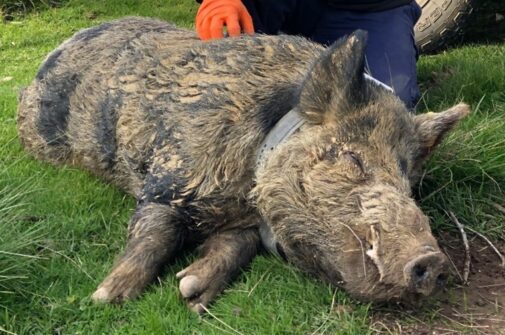This feral piggy went home… but where is home?
A recent study published in Wildlife Research by authors Cameron Wilson and Matthew Gentle of the Queensland Department of Agriculture and Fisheries (DAF), and Darren Marshall from Southern Queensland Landscapes, has shed new light on the environmental and biological factors that affect the behaviour of feral pigs in Australia.
According to co-author Cameron Wilson, this work has the potential to help land managers improve their feral pig control outcomes.
“A better understanding of the factors that influence feral pig movement will help land managers to refine their control activities,” Mr Wilson said. “Likewise, the research also has exciting applications for emergency animal disease response activities” he continued.
“The information we’ve gathered about how they utilise the environment will contribute to the Australian Animal Disease Spread (AADIS) model. This model will be used in the event of a disease outbreak, such as African Swine Fever or foot-and-mouth disease, to predict disease spread in feral pig populations,” Mr Wilson commented.
The research explored the factors that influence:
- how far and where feral pigs move in their environment (activity ranges)
- where feral pigs move in their environment
- preference for different habitat types.
The study was carried out at four sites in eastern Australia. The trial design made sure to encompass diverse landscapes such as agricultural land, gas exploration areas, and a tropical island. The researchers captured and equipped feral pigs with GPS tracking devices at each location. This technology monitored pig movements and activity ranges for several months.

Results
Home range of feral pigs
The results of the study indicate that the most influential factors affecting the size of a feral pig’s home range and core range are sex and study site location.
Feral pig activity ranges are also influenced by landscape productivity. In less productive landscapes, ranges are larger as greater movement is required to obtain food and shelter.
Male pigs generally have larger home ranges than females, most likely due to their biological drive for reproduction. This behaviour, which could result in males coming into contact with females in multiple sounders*, has the potential for males to contribute to disease spread from sounder to sounder. The study found no seasonal effect on the relative size of activity ranges. Any variation in ranges across different seasons is likely to be influenced by other climatic conditions, such as rainfall, temperature, and abundance and distribution of food, water, and shelter.
Habitat selection
The analysis of habitat selection suggests that in the study sites analysed, feral pigs have a preference for habitat with 20-40% canopy cover (e.g. open woodland) and actively avoid open vegetation (0-10% canopy cover) and very dense vegetation (>50% canopy cover). This finding contradicts other Australian studies on habitat use. Previous studies have suggested pigs prefer thicker habitat but methodological differences between this study and others may have influenced these results.
Research impacts
This study provides valuable insights into the factors that influence feral pig activity ranges in eastern Australia. The findings contribute to our understanding of the ecology and behaviour of this invasive species. The results can be used for disease spread modelling in the event of a endemic disease outbreak. Additionally, land managers and concerned citizens alike, will be able to use these findings to develop more effective management strategies to reduce the impact of feral pigs.
*Groups of related females and their young